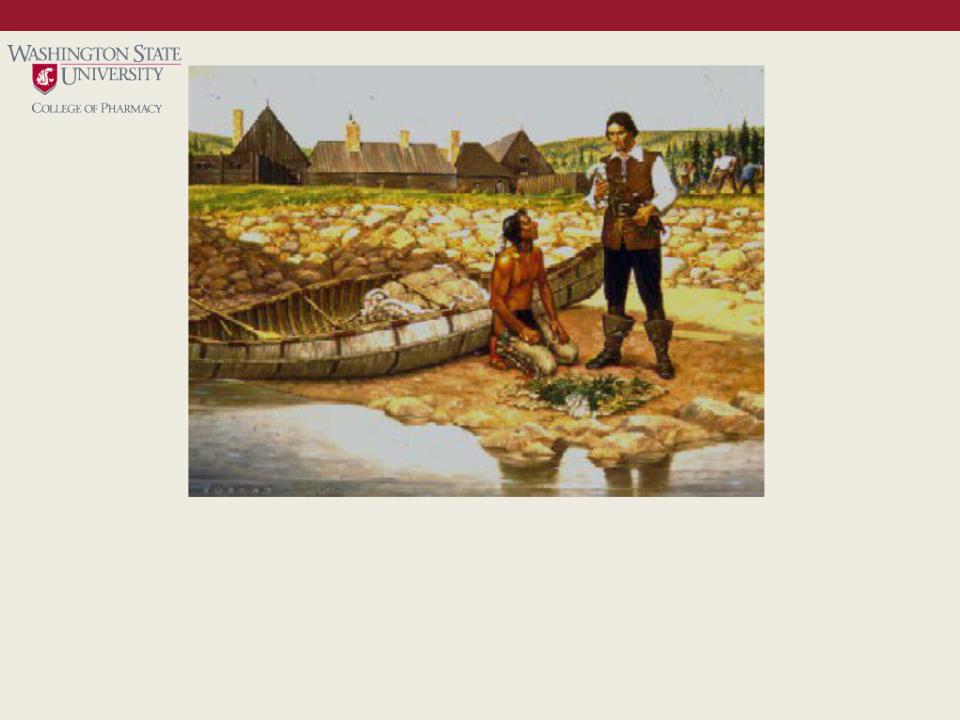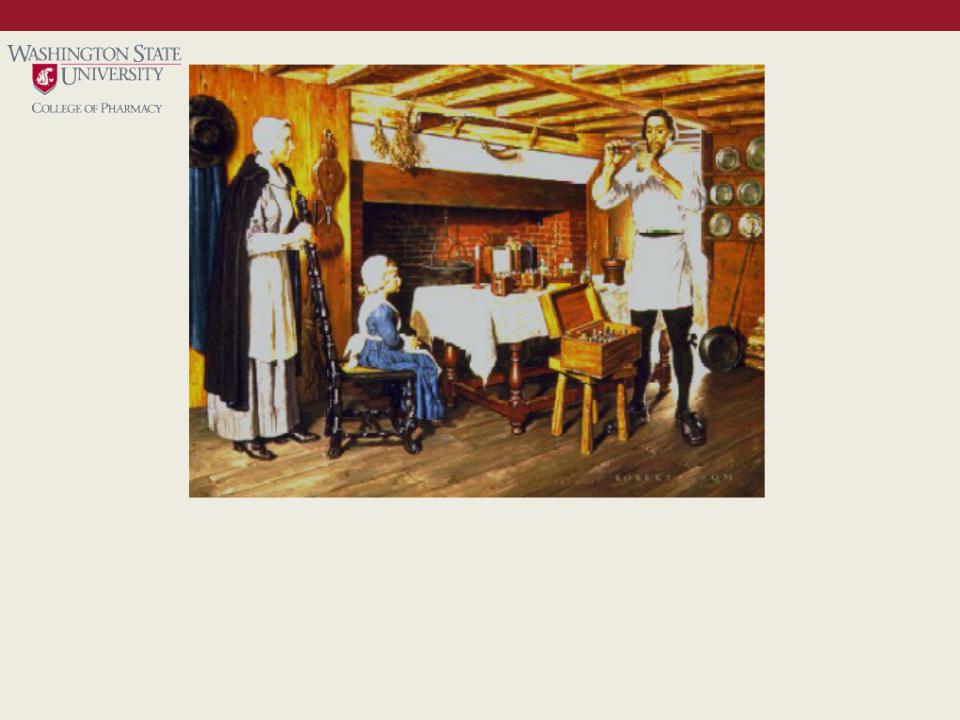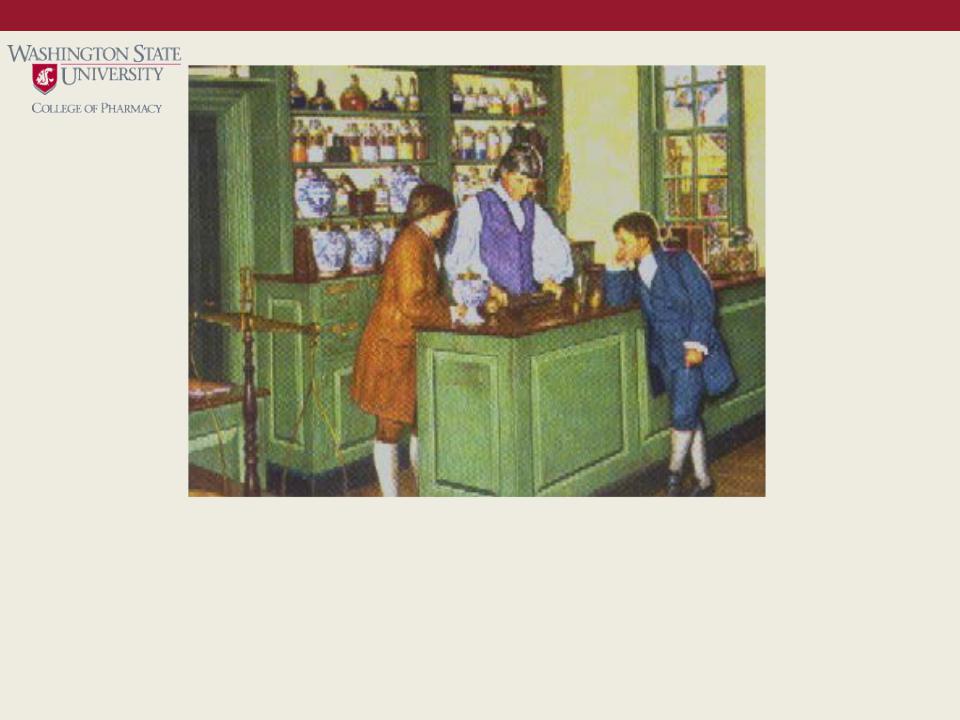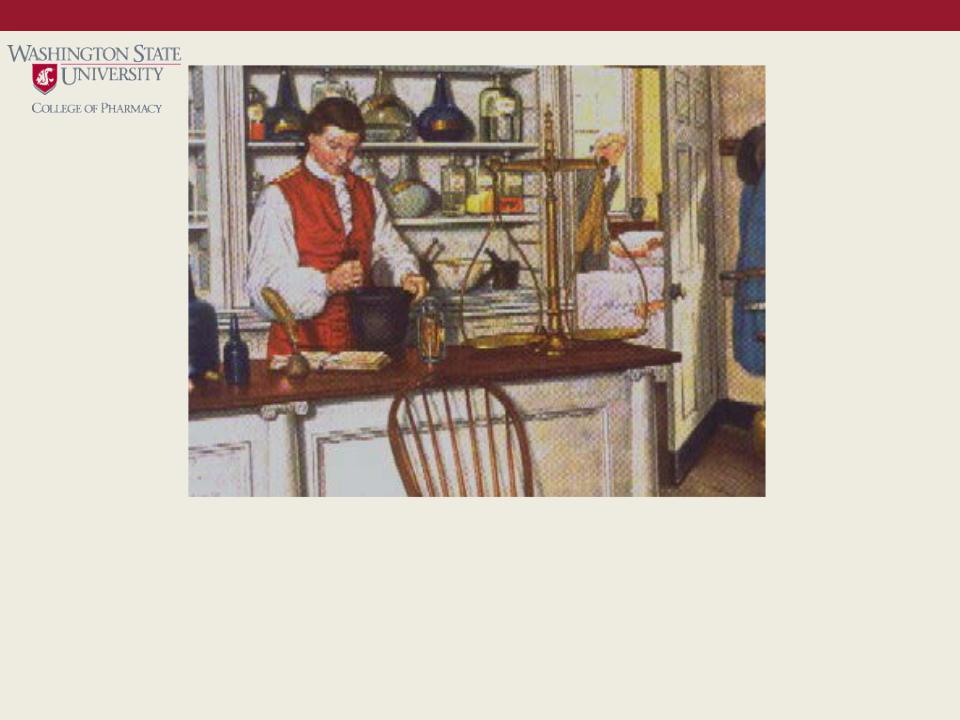
- •1. Before the Dawn of History
- •2. Pharmacy in Ancient Babylonia
- •3. Pharmacy in Ancient China
- •4. Days of the Papyrus Ebers
- •5. Theophrastus – Father of Botany
- •6. The Royal Toxicologist – Mithridates VI
- •7. Terra Sigillata – An Early “Trademarked” Drug
- •8. Dioscorides – A Scientist Looks at Drugs
- •9. Galen – Experimenter in Drug Compounding
- •10. Damian and Cosmas – Pharmacy’s Patron Saints
- •11. Monastic Pharmacy
- •12. The First Apothecary Shops
- •13. Avicenna – The “Persian Galen”
- •14. Separation of Pharmacy and Medicine
- •15. The First Official Pharacopeia
- •16. The Society of Apothecaries of London
- •17. Louis Hébert, Apothecary to New France (Canada)
- •18. The Governor who Healed the Sick
- •19. The Marshall Apothecary
- •20. First Hospital in Colonial America
- •21. Scheele – Greatest of the Pharmacists-Chemists
- •22. Craigie – America’s First Apothecary General
- •23. Sertürner – First of the Alkaloid Chemists
- •24. Caventou, Pelletier and Quinne
- •25. American Pharmacy Builds its Foundations
- •26. The Shakers and Medicinal Herbs
- •27. The American Pharmaceutical Association
- •28. European and American Pharmacy Meet
- •29. The Father of American Pharmacy
- •30. A Revolution in Pharmaceutical Education
- •31. The Pharmacopeia Comes of Age
- •32. The Standardization of Pharmaceuticals
- •33. Wresting the Jungle’s Secrets
- •34. Stanislas Limousin – Pharmacal Inventor
- •35. The Era of Biologicals
- •36. The Development of Chemotherapy
- •37. Pharmaceutical Research
- •38. Pharmaceutical Manufacturing Comes of Age
- •39. The Era of Antibiotics
- •40. Pharmacy Today and Tomorrow

17. LOUIS HÉBERT, APOTHECARY TO NEW FRANCE (CANADA)
Young Parisian Apothecary Louis Hébert answered the call of the New World in 1605, when he helped de Monts and Champlain build New France's first settlement, the Habitation, at Port Royal (Nova Scotia, Canada). Hébert looked after the health of the pioneers, cultivated native drug plants, and supervised the gardens. At the waterfront, he examined specimens of drug plants offered by Micmac Indians. These included Arum, (Jack-in-the-Pulpit), Eupatorium (Boneset), Verbascum (Mullein), and Hydrastis (Golden Seal). When the Habitation was destroyed by the English in 1613, he returned to his Parisian apothecary shop. The lure of Canada was strong, however, and in 1617, he and the family returned with Champlain to Quebec, where Hébert's "green thumb" gained him lasting fame as the first successful farmer in what is now Canada.

18. THE GOVERNOR WHO HEALED THE SICK
Many Europeans "of quality and wealth, particularly those who were non-conformists in religion" were attracted to the possibilities of the American Colonies. From Britain came John Winthrop, first Governor of Massachusetts Bay Colony and founder of Boston. Governor Winthrop, unable to induce professionals to the Colony, sought advice from English apothecaries and physicians, and added to his small store of imported drugs those derived from plants native to New England. In his home (about 1640), he made available as best he could the "art and mystery" of the apothecary for his citizens.

19. THE MARSHALL APOTHECARY
Christopher Marshall, an Irish immigrant, established his apothecary shop in Philadelphia in 1729. During 96 years, this pioneer pharmaceutical enterprise became a leading retail store, nucleus of large-scale chemical manufacturing; a "practical" training school for pharmacists; an important supply depot during the Revolution; and finally, it was managed by granddaughter Elizabeth, America's first woman pharmacist. Christopher earned the title of "The fighting Quaker" during the Revolution; his sons, Charles and Christopher, Jr., (shown as youths with their father, about 1754) earned individual fame and carried on his fine traditions.

20. FIRST HOSPITAL IN COLONIAL AMERICA
Colonial America's first hospital (Pennsylvania) was established in Philadelphia in 1751; the first Hospital Pharmacy began operations there in 1752, temporarily set up in the Kinsey house, which served until the first hospital building was completed. The ingenuity of Benjamin Franklin was helpful in both. First Hospital Pharmacist was Jonathan Roberts; but it was his successor, John Morgan, whose practice as a hospital pharmacist (1755-56), and whose impact upon Pharmacy and Medicine influenced changes that were to become of importance to the development of professional pharmacy in North America. First as pharmacist, later as physician, he advocated prescription writing and championed independent practice of two professions.
